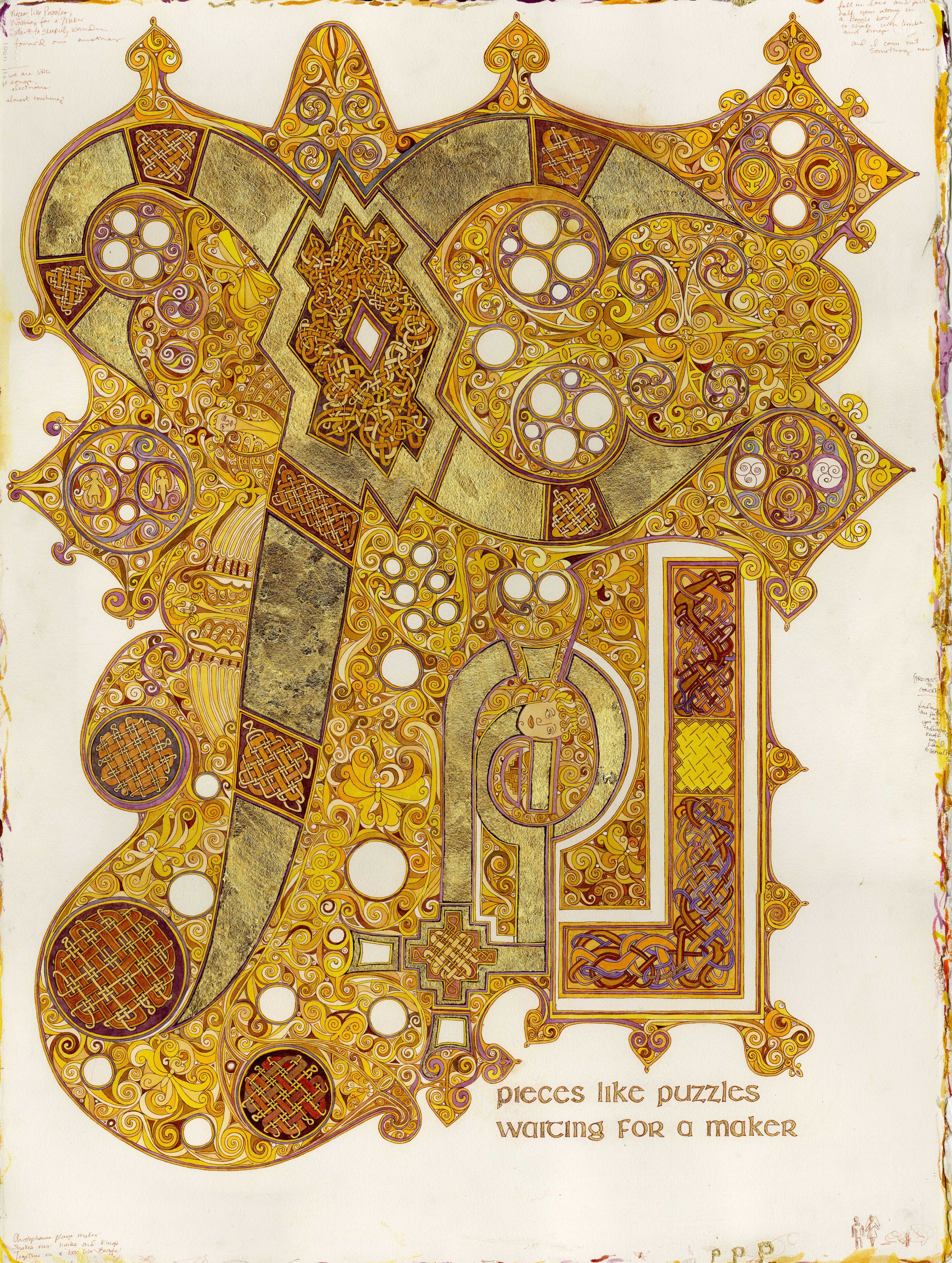

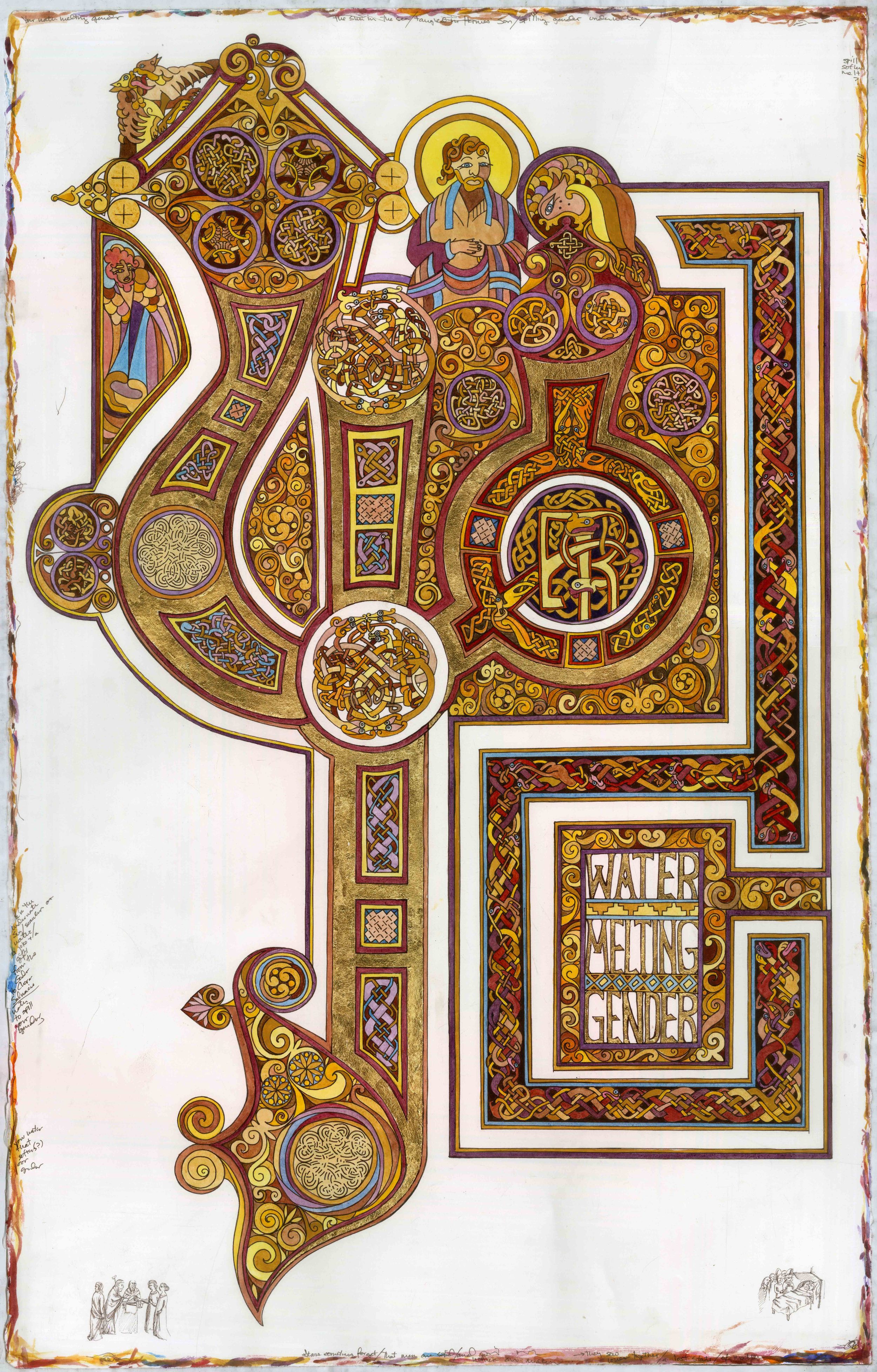


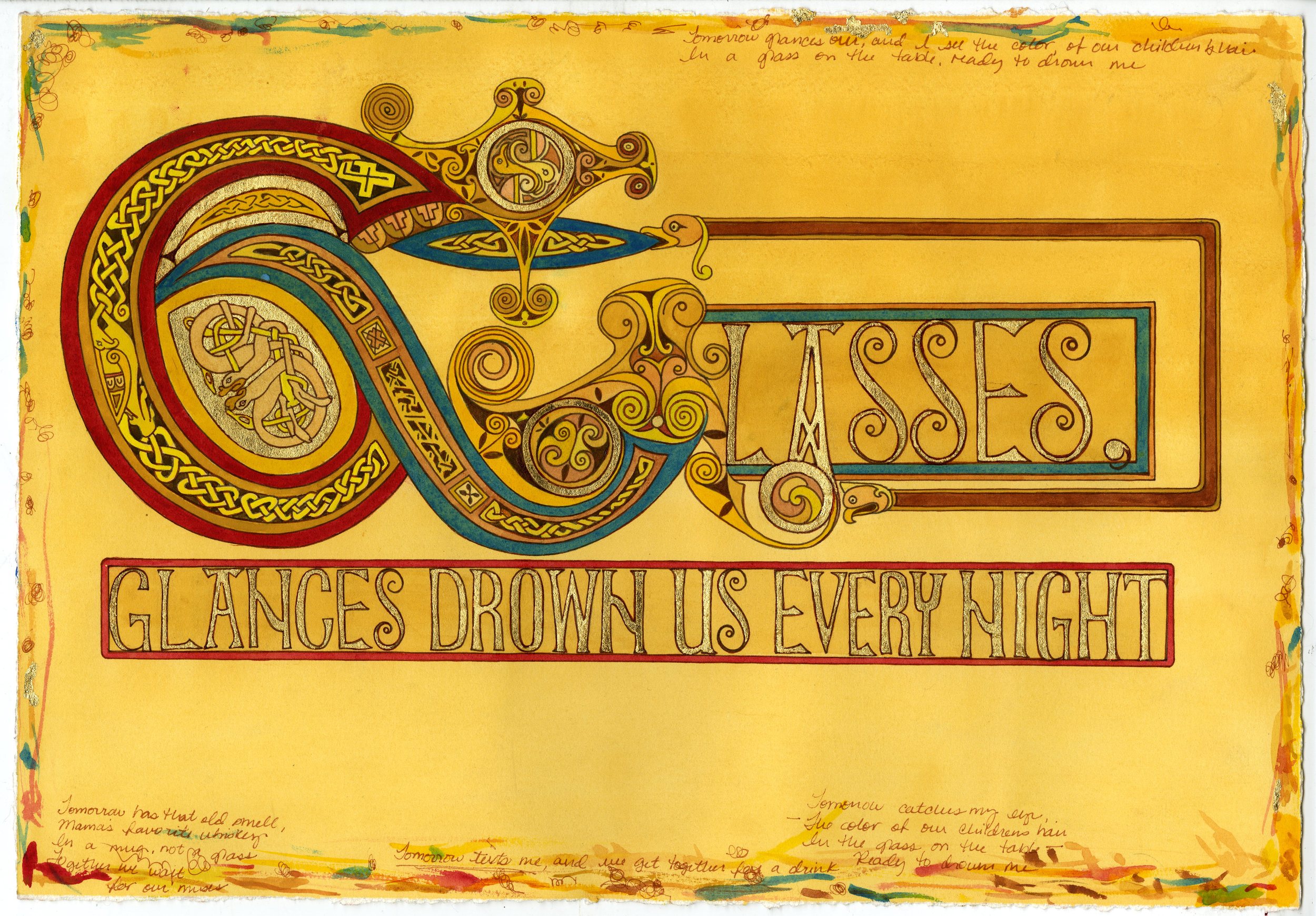
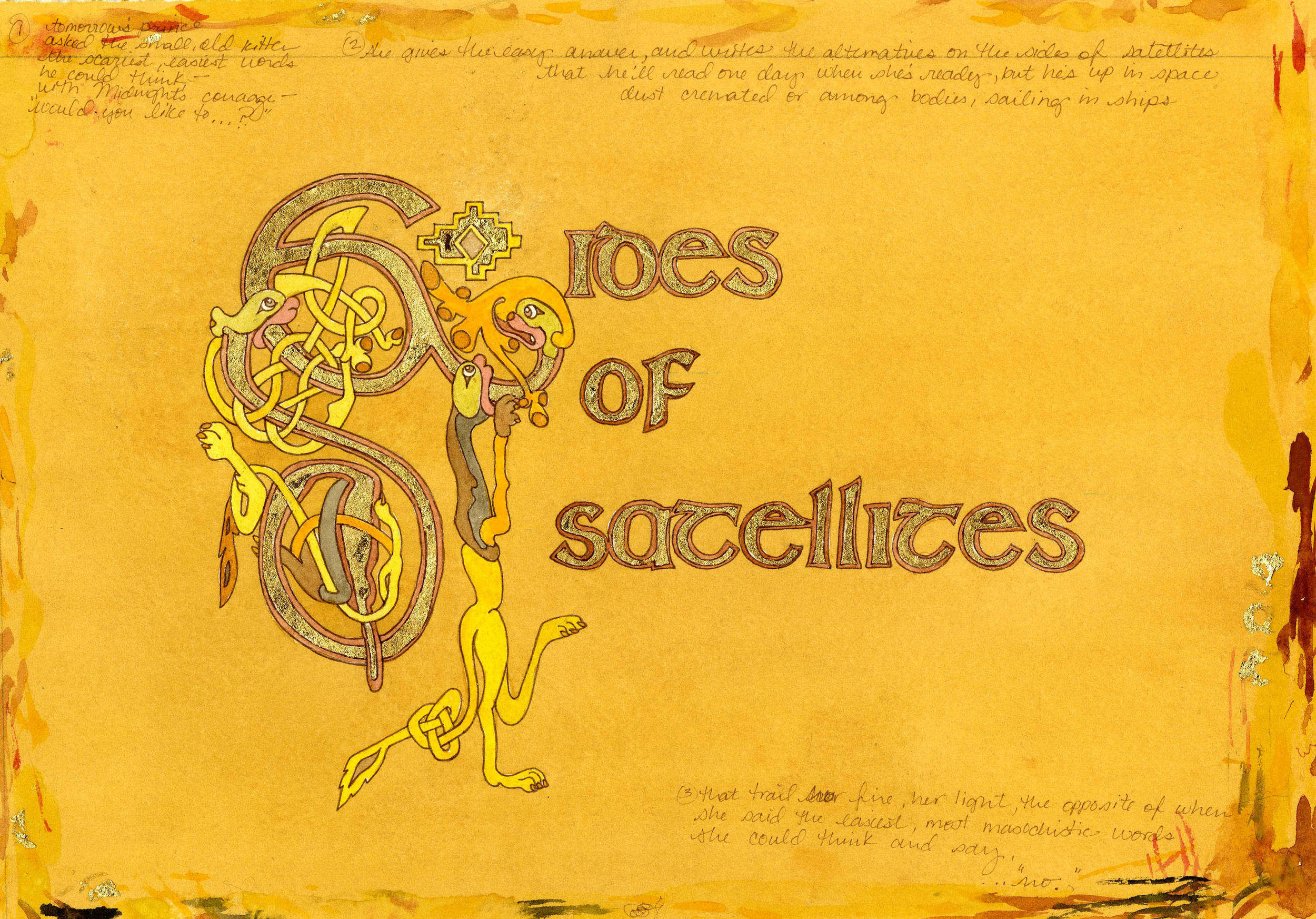

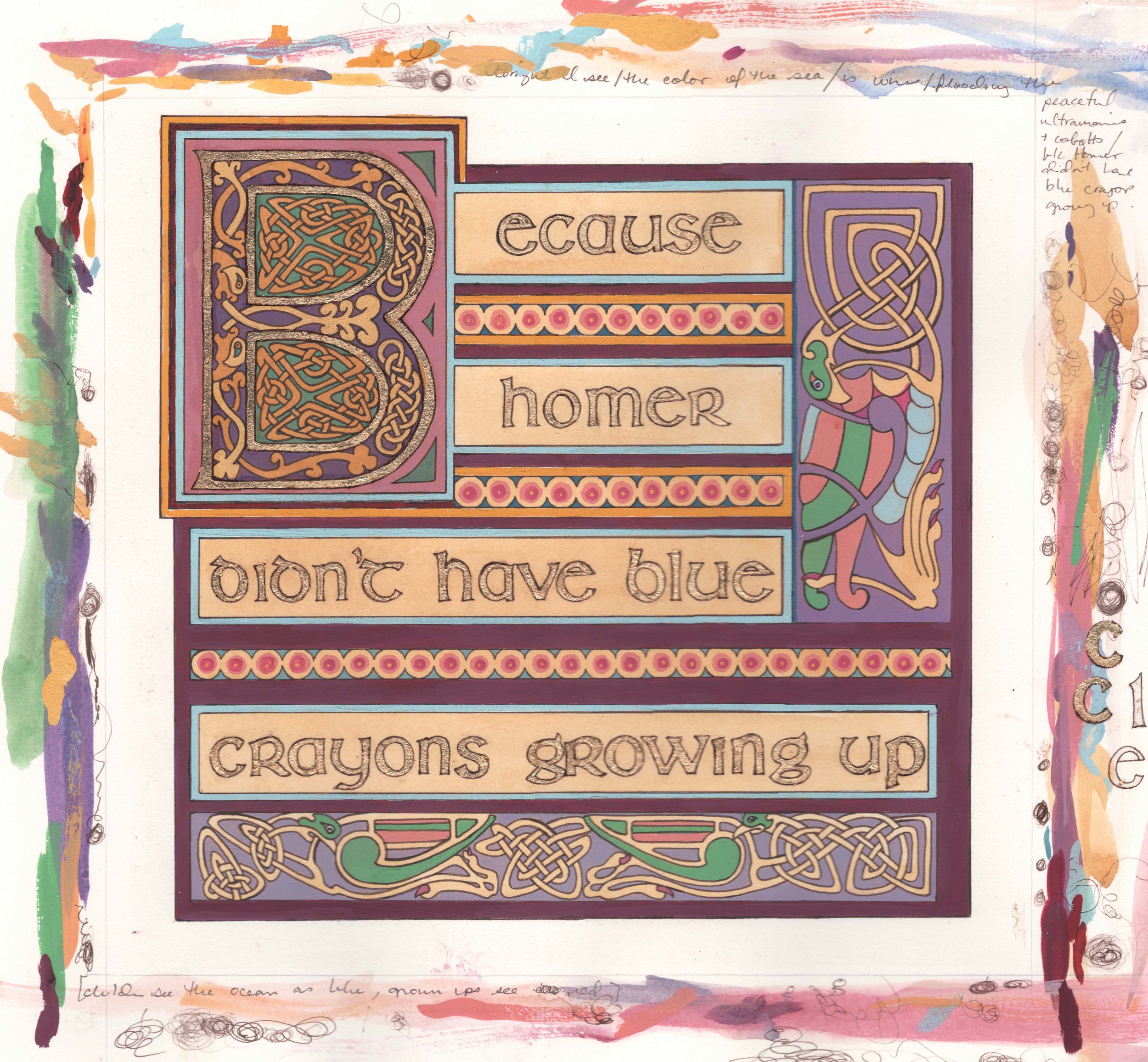
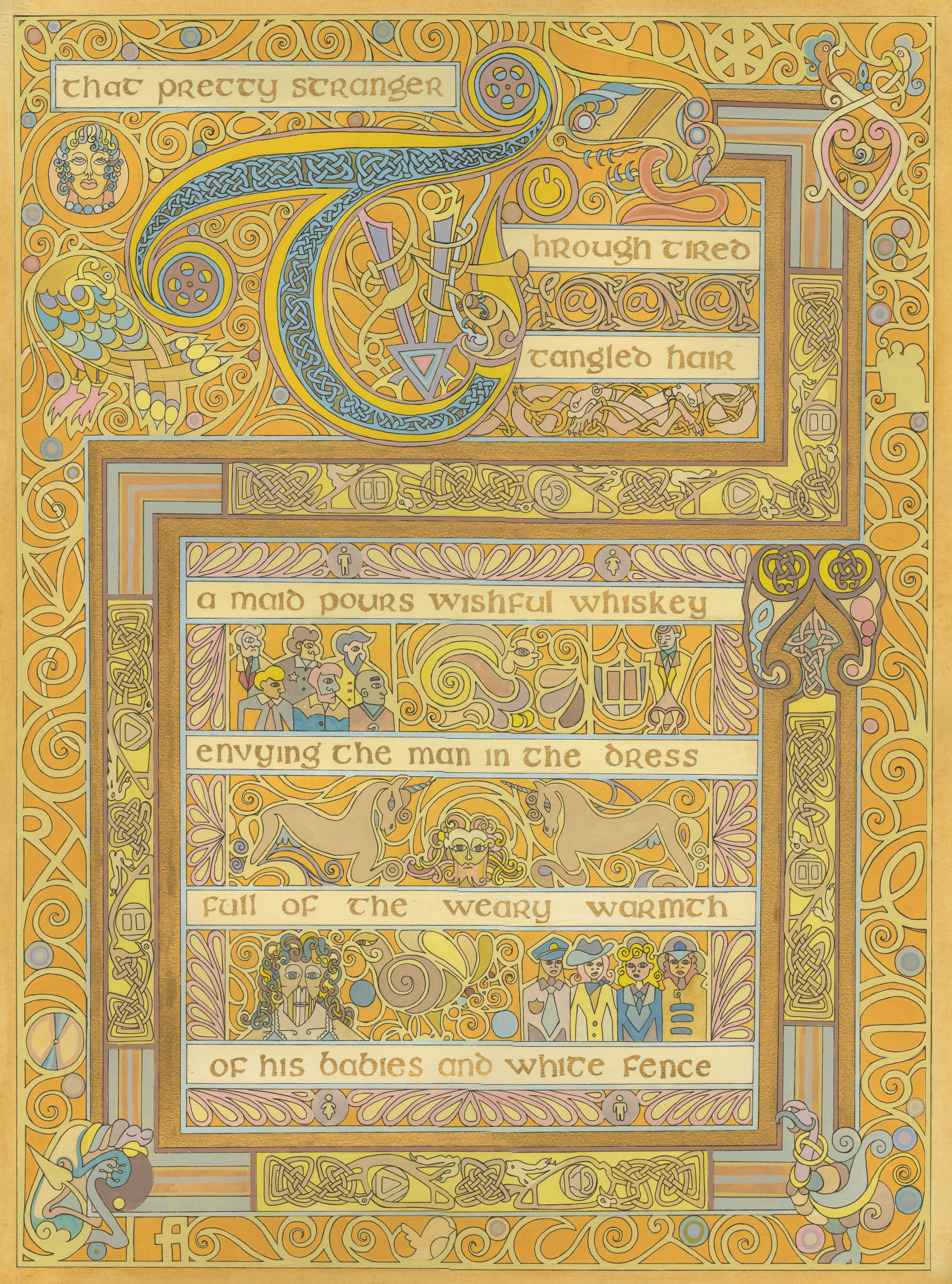

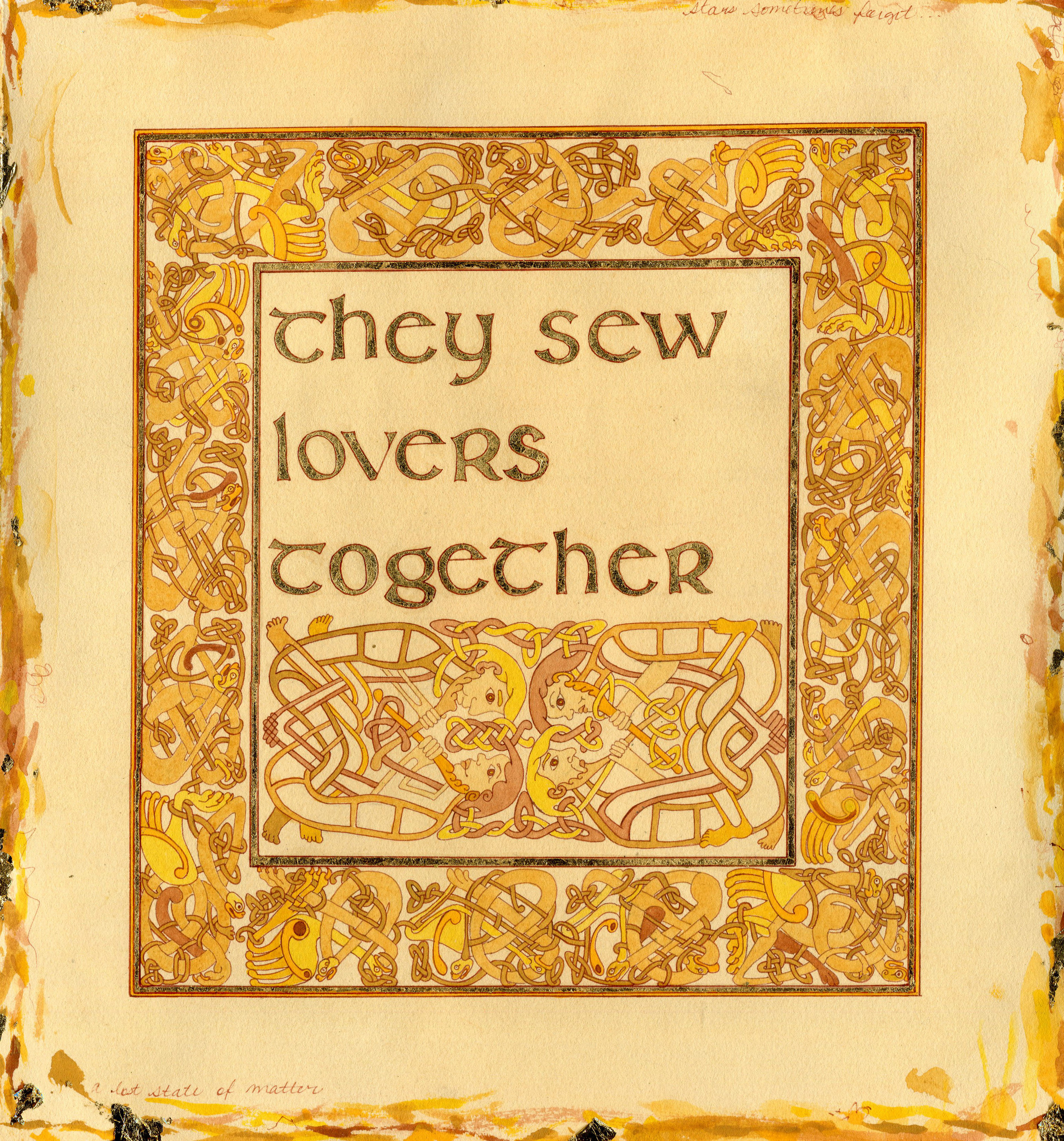

Artist Statement, Liz Morrison
The margins are a space for outcasts, monsters, and artists. In the margins of Medieval manuscripts, social norms are inverted: rabbits hunt dogs, angels become jesters, and illustrations of deviant acts abound. Medieval artists used the edge of the page to satirize their society, giving historians a complex context for the rigid, standardized images that fill the middle of the page. (These central images illustrate historically “normal” acts, such as the consummation of a marriage, as witnessed by the bride and groom’s families.)
Exploring and studying margins informs us of shifting social prejudices, such as perceptions of sexuality: the meaning of gender, sexual acts, and orientation is determined by a particular cultural context and changes over time. “Normal” sexuality, therefore, does not have a fixed meaning. For example, Medieval thinking did not directly link sexuality to identity, so there was no need for the categories of “sexual orientation” and “gender identity” that are so prevalent in contemporary media.
My work attempts to create awareness of the constructed, arbitrary nature of “normal” sexuality by inverting the Medieval formula. Socially marginalized figures, such as those of the transgender community, are centralized, whereas those with “normal” sexuality are pushed to the margins of the page. Images of these figures are woven into poetry about transitions in sexuality, referencing Ovid’s Metamorphoses and modern theories about sexual and gender fluidity. Both the text and transgender figures are illuminated, physically with gold leaf and metaphorically by cultivating awareness.
